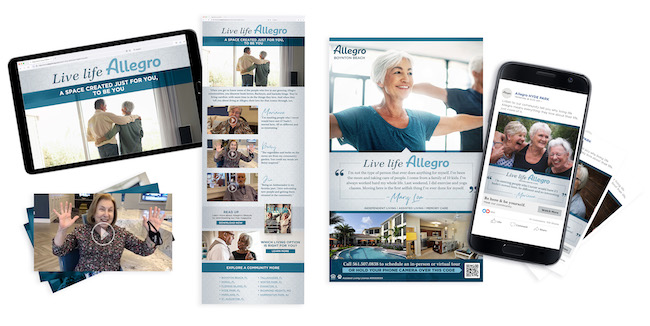Illusory superiority and consumer research
Editor’s note: Meagan Peters is VP of behavioral science and strategy at Cannonball Agency, Chicago.
When my 94-year-old grandma first began touring retirement communities she boldly told us, “You know everyone looks really old here. I don’t look like that at all.” After the initial tour, I remember my whole family laughing about this.
But we all do this! I’m guilty of it too.
What was happening to all of us is called illusory superiority, also known as the “above-average effect,” a bias where people overestimate their own qualities or abilities. In my grandmother’s case, she thought she was more youthful than she really was. And my family and I falsely believed we knew best and interjected our beliefs on how my grandmother should live her life.
Brands often pride themselves on seeing the objective, functional side of their consumers and don’t take the time to invest in the research to understand their consumers’ perspectives, needs and intentions. Yet, to build a successful relationship, it is imperative to look through the biased lenses people wear.
Does your messaging consider how your consumers see themselves?
I had the opportunity to address this discrepancy in my work at Cannonball Agency. Our client was Allegro, a company specializing in developing and managing senior living communities. Most competitive campaigns focused on negative ideations. They were trapped in society’s point of view, which has taught us to pity and be fearful for our seniors. Countless messages focused on what if – what if you fall, what if you need more care, what if you can no longer drive.
There is a reason why so many messages fall into this trap. These messages frequently resonate with caregivers, who are often part of the decision-making process. However, they exclude the senior’s point of view and slow or even prevent buy-in. Once I started seeing this inconsistency, I was confident that our campaign needed two separate messaging ideas – one to accommodate how seniors see themselves and one to reassure caregivers that their loved ones will be taken care of.
Positive consumer connections: Tailoring branding messages by audience
When we looked at the divergence between how seniors and caregivers perceive their needs, we saw that the overarching campaign needed to show how Allegro creates joyful living and fosters opportunities for active participation and contribution. Through this positive narrative, it would be easier to get the buy-in needed by the actual potential resident. Conversely, the caregiver’s point of view needed to be secondary and not forward-facing. The caregiver messaging needed to appear in targeted places for this specific audience or in requested materials.
Through these insights, Cannonball crafted the campaign Live Life Allegro: Live life on your terms and without limits. The messaging highlighted how Allegro encourages and fosters human connections that grow the human spirit. It focused on how Allegro’s concierge care and luxury amenities eliminate the little nuisances so residents can spend more time doing the things they want.
When brands and marketers take the time to understand the biases and discrepancies that cloud perception, they give themselves the insight they need to achieve their goals.
The right brand message drives activation

In this case, Allegro wanted to draw people closer to its brand and increase move-ins. Cannonball created a campaign that emotionally tapped into how seniors see themselves and how they want to be seen. This approach drew potential residents into consideration mode with messages and virtual tours so that trained property-level specialists could close sales.
In 2020, Cannonball’s campaign used this strategic, segmented approach and was so successful it generated around four times return on advertising spend in the first year. In comparison, across industries, the average was around three times return on advertising spending. In addition, the campaign removed friction to speed up the inquiry to move-in time period from an industry average of around four to 24 months down to an average of two months. Addressing the key decision makers – both the senior and their loved ones – was key in delivering results.
As for my grandmother, I believe she could have gone into a retirement community earlier and reaped the many benefits offered by such communities. If there had been messaging that sparked her zest for life, she may have been willing to make a life change sooner. I know she would have been delighted seeing residents as vivid and charismatic as she saw herself.
I learned a valuable lesson about bias from my grandmother. It is imperative to take the time to reconcile how everyone perceives the situation and what they believe is important.
